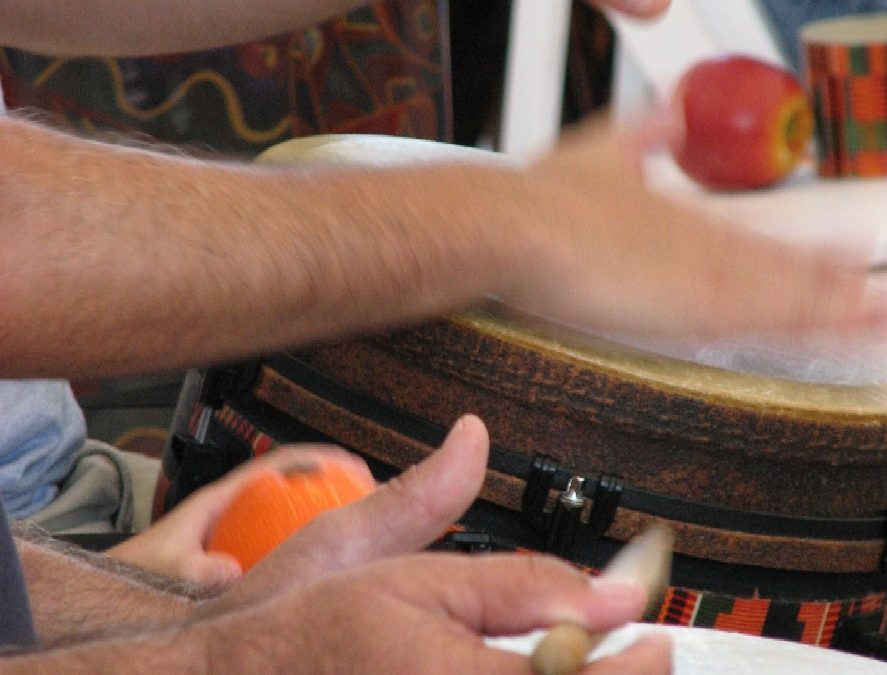Originally published November 19, 2019 at:https://www.facebook.com/julian.douglas/posts/10217870457250350?notif_id=1582582873261854¬if_t=feedback_reaction_generic
So the subject of change came up after the circle last night.
This goes to some differing conceptions of how people figure out what to play at drum circles. For some folks, it’s about the “song”, which has defined parts: a beginning, a middle, and an end. These can be great when everybody agrees on what song to play and everyone knows how to play it.
My favorite circles are improvisational and more like free jazz. They begin in silence. We create something together based on the present moment. It changes, grows, shrinks, gets louder or quieter – and at some point, it returns to silence. Some of my best drum circle experiences were those that went on for many hours without stopping – moving through several distinct musical settings, transitioning from one idea to the next, and the next, and so on. In this way, the participants don’t have to have the same vocabulary, or even a common aesthetic and the resulting experience is always unique to the people participating.
I’ve been writing a piece on non-verbal/musical drum circle facilitation. I thought some of you might be interested in a snippet on ways to approach variation from within the music rather than stopping in order to play something new.
(some of these approaches might be considered advanced, pick and choose what you like, leave the rest)
——-
10. As the other drummers sink deeper into the experience, increase energy by adding (musical) tension. This can be one or two note punctuation, fills (short ones at first, so that drummers relying on you for the time don’t get shaky and fall off, longer ones as they build confidence), more abstract variations on your own parts, brief moments (one or two quarter notes usually) of silence, These variations serve at least three purposes, 1. They help the more uncertain drummers build self reliance, 2. They give other more experienced drummers “permission” if they need it to become more assertive 3. Because we’re being musical, they add to musicality of the experience which is the wellspring of inspiration.
11. By now, the circle should be well past it’s tentative stage and should be cooking along. If it is, the circle doesn’t need any further facilitation. If/when it feels like it needs more novelty, it’s usually a good time to think about tempo and dynamics as the next shift. Here my general rule of thumb is to use contrast or momentum. If we’re at a moderate tempo, let’s increase it. If we’re at a fast tempo, let’s slow it down. If we haven’t maxed out the top of our dynamic range, let’s move in that direction. If we have and we’ve been there for a while, let’s bring it down to a more moderate or even quiet level.
12. Encourage novelty through the course of the circle.
A. tempo (As noted in 11)
B. dynamics (As noted in 11)
C. groove changes: (take a variation of what you’re playing and make that the new groove, or listen for an alternate groove in what others are playing and shift to that)
D. rhythmic subtraction: (start slowly subtracting notes from what you’re playing, usually keeping the “pillars” of the line) others will hear the changes and will shift as well
E. Extended fills: fill for a most of a bar or a whole bar. Usually resolve powerfully to the 1 and strongly state the groove you departed from.
F. solo: (if the facilitator solos, the key is to insure that the groove and pulse are strong enough to handle the tension in the solo, play enough tension to affect the energy, but be ready to drop back into the groove if it starts to lose stability) resolve powerfully to the 1 and strongly state the groove you departed from.
A,B,C, and D, above can also be used to shift to a new “song” when taken to the extreme. For example subtraction to the point where you’re playing no more than 2 or 3 notes per bar, or a groove change that keeps the pulse but divides it in triplet. At which point we go through the same process of coalescing the participants, and helping them build confidence before exploring the new musical territory.
—-

